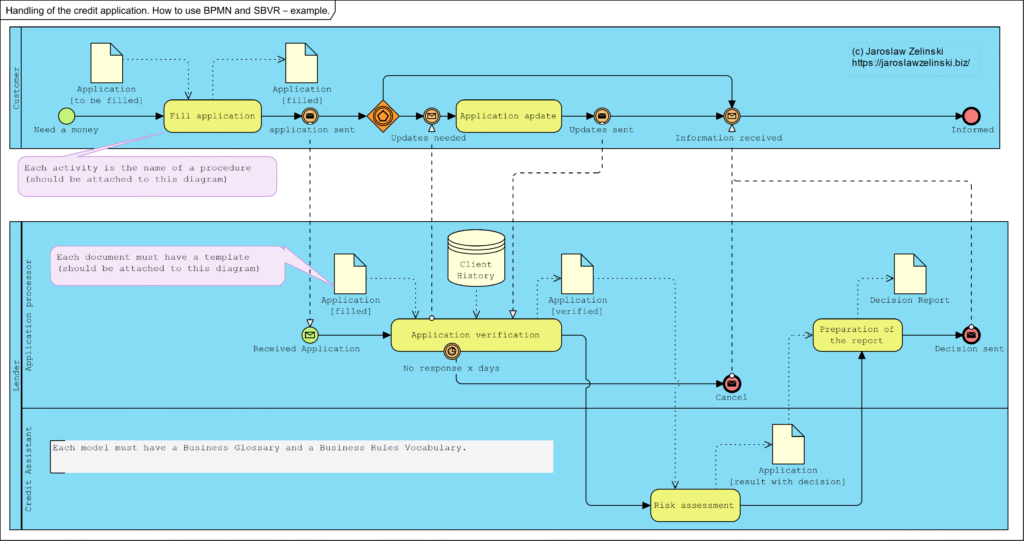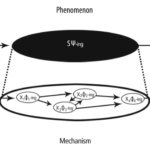SBVR
now browsing by tag
Handling of the credit application. How to use BPMN and SBVR – example.

A common problem in companies, both very small and very large, is the lack of full knowledge of how the company really works. The consequence is the unpredictability of the consequences of decisions taken.
Innym negatywnym efektem tego braku wiedzy jest trudność w zawieraniu umów i wdrażanie do pracy nowych pracowników.
The solution to both of these problems is a correctly executed business model, the backbone of which is business process maps, associated procedures, business rules and document templates. A correctly developed model allows you to familiarise yourself with everything that affects the business quickly. It also allows everyone to understand how the business works.
Below is an example of such a model: the business process model.

Mechanism of operation vs. system model

Most often in the course of analysis we use the term model, less often mechanism. The thing is that the term mechanism appears when we want to explain something, e.g. “the mechanism of generating a discount on an invoice”. The thing is that the term mechanism appears when we want to explain something, e.g. “the mechanism for generating a discount on an invoice”. But here beware! A model (block diagrams, formulae, etc.) is documentation, a copyrighted description. The mechanism is what we understood by reading these documentation (model), because the mechanism is protected know-how. The content of the application to the Patent Office is the model (description), but what we patent is the mechanism invented/developed.
Source: Mechanism of operation vs. system model – Jarosław Żeliński IT-Consulting
Ontology-Oriented Data Management and Document Databases

This study presents a method for the storage of data organized in digital documents, which is proven in practice. The discussed method does not bear any disadvantages of the relational model used for data organization, such as the loss of data context and complications evoked by the lack of data redundancy. The method presented here can be used for data organization into documents (digital and paper) as classified aggregates and for data classification. The study also describes a new metamodel for the data structure which assumes that documents, being data structures, form compact aggregates, classified as objects, or event descriptions, thus always assigning them a specific and unambiguous context. Furthermore, the study presents a design method for documents as context aggregates that allows leveling the disadvantages of the relational model and ensures efficient information management. The work also contains practical examples of the application of the described method.
Digital Documents as Data Carriers and a Method of Data Management Guaranteeing the Unambiguity of the Recorded Information: Ontology-Oriented Data Management and Document Databases
PIM modelling -Reduction of UML notation

The work is an attempt to systematise the use of key OMG.org notations in the process of system analysis and design. Under the term. and UML of knowledge in the field of object-oriented analysis and design and the notation systems used in this area. The author pays special attention to the differences between data-and responsibility-oriented design methods (chapter Analysis and object-oriented design). The following section describes the conceptual basis described in the SBVR, MOF, MDA specifications and the modelling method using UML notation. The author argues that ontology is not a model of the world, it only describes it.
